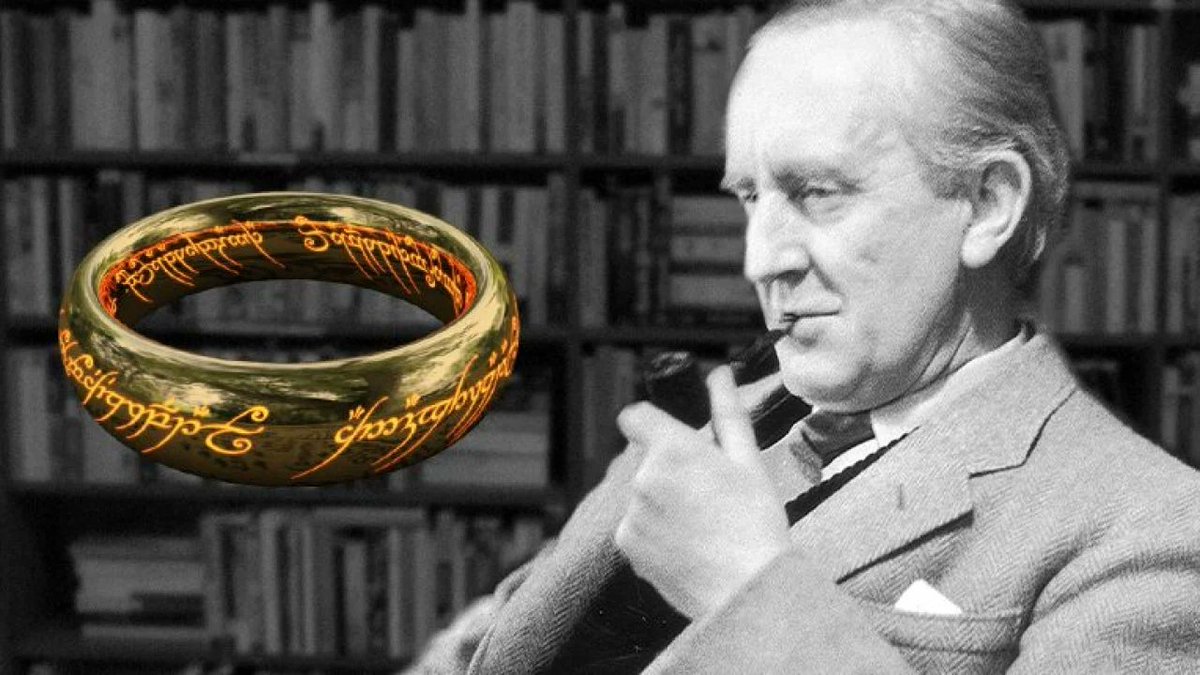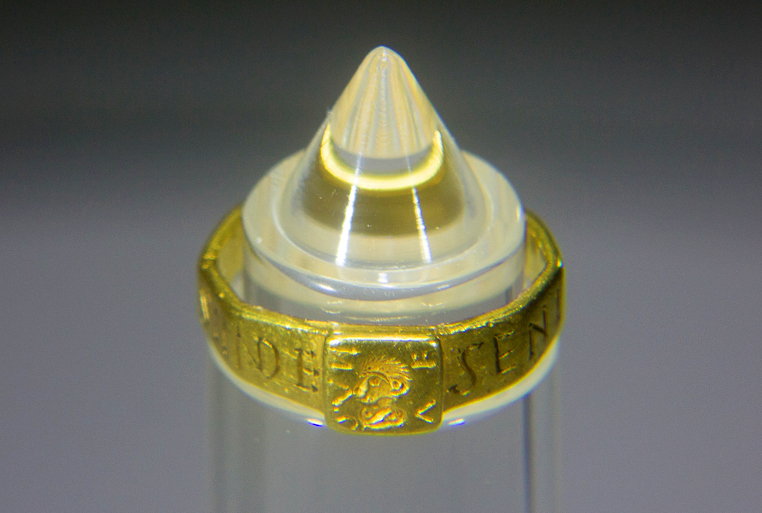6) Soon afterwards Tolkien would begin creating his legendarium of Middle-earth with both “The Hobbit” and “The Lord of the Rings” revolving around the magical, golden and often-stolen One Ring that grants the wearer invisibility. Had Tolkien been inspired by the Silvianus ring?
7) We might fancifully conclude then that in the mid 4th century AD, Silvianus - a late-Roman man still clinging on to the old pagan gods, had his beloved Venus ring stolen from him by a Christian that he knew named Senicianus. The pious thief then rededicated the pagan ring...
8) ...with his own ironic inscription, saying he "lives in God". The bitter Silvianus then travelled to an ancient pagan temple to deposit a curse on the Christian thief. We know the ring was subsequently lost but are left to imagine if fate ever caught up with Senicianus...
9) Two millienia later, both the ring and the curse on its thief are both discovered 80 miles apart. Wheeler and Tolkien, titans in their fields, analyse the mysterious artefacts and just maybe, the gold ring goes on to inspire one of the greatest works of fantasy literature. END
For those interested in seeing these ancient artefacts...
The Silvianus Ring is displayed at @TheVyneNT, Hampshire. The curse tablet is displayed at Lydney Park Estate, Gloucestershire https://www.lydneyparkestate.co.uk/lydney-park-gardens

The Silvianus Ring is displayed at @TheVyneNT, Hampshire. The curse tablet is displayed at Lydney Park Estate, Gloucestershire https://www.lydneyparkestate.co.uk/lydney-park-gardens


 Read on Twitter
Read on Twitter





